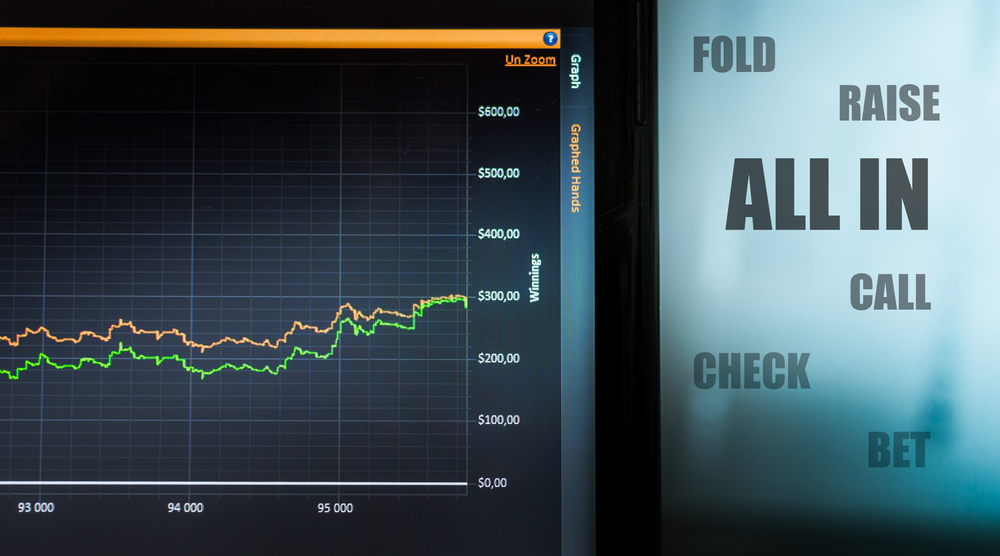Many players moving from No-Limit Texas Hold’em bring their understanding of pre-flop hand categories and try to use that in PLO. Failure to understand the strategic differences in the makeup of PLO pre-flop categories can significantly affect their game. In this post, we will cover PLO pre-flop hand categories and help you win more by putting them in strategic perspective.
Table of Contents
NLHE Pre-Flop Hand Categories
In NLHE, we typically break hands down into three big strategic categories:
- Suited Hands – two cards of the same suite
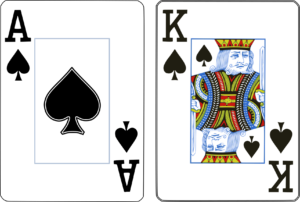
- Paired Hands – two cards of the same rank
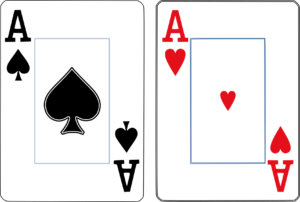
- Offsuit Hands – two cards with different suits (pairs are also offsuit but are separated into their own strategic category in NLHE)
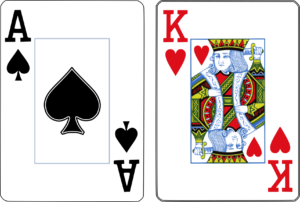
Players often use a 13×13 matrix that covers the 169 different strategic hands in Texas Hold’em to visualize these categories.
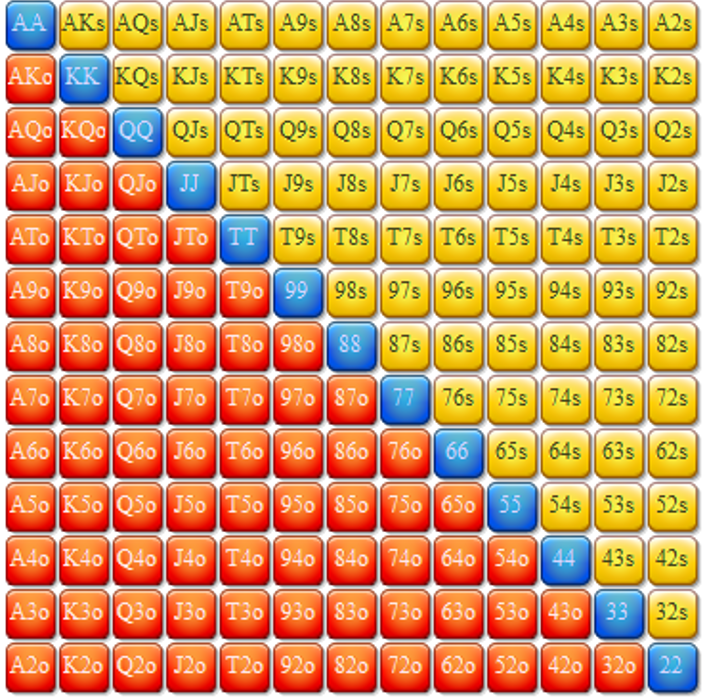
When looking at the matrix, players understand that there are 4 combos of each suited hand, 6 combos of each pair, and 12 combos of each offsuit hand, making up 1326 NLHE starting hands. The chart below shows how much each category makes up our entire range.
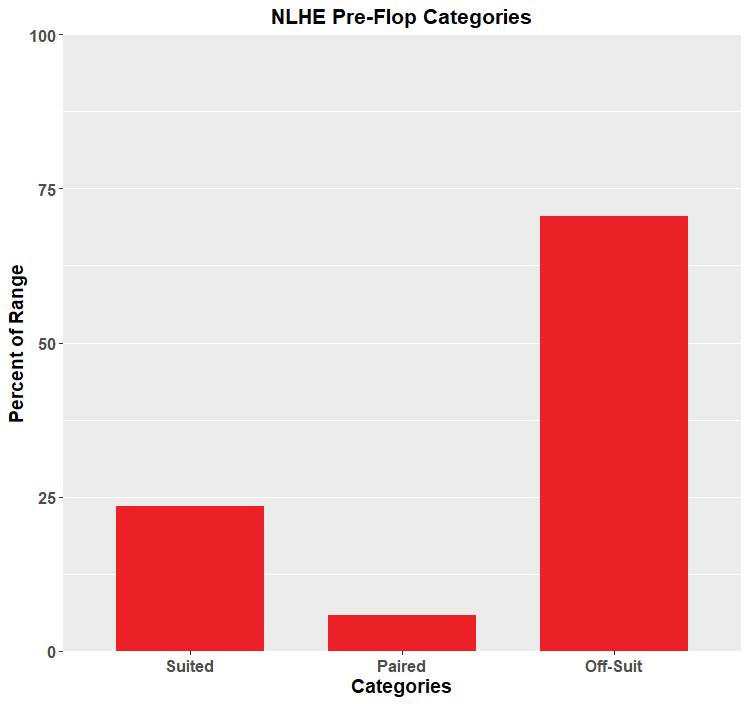
PLO Pre-Flop Hand Categories
In PLO, we receive an additional two cards pre-flop. These two cards increase our possible PLO starting hands to 270,725 four-card combinations, more than 200 times as many as in NLHE. Let that sink in for a minute.
Not only are there significantly more starting hands, but there is also a significant shift in pre-flop hand categories. We still have offsuit, suited, and paired hands; however, double-suited and double-paired hands are now possible.
We can break PLO starting hands into three major categories.
- Rainbow Hands – four offsuit cards (the equivalent of offsuit in Texas Hold’em).

- Single-Suited Hands – hands with two, three, or four cards of one suit and the remaining cards being different suits.

- Double-Suited Hands – hands with two pairs of suited cards, each of two different suits.

Within these three categories, we can further divide hands into paired and unpaired hands in each of the three major categories, leaving us with six categories.
- Unpaired Rainbow
- Paired Rainbow
- Unpaired Single-Suited
- Paired Single-Suited
- Unpaired Double-Suited
- Paired Double-Suited
We can see how much each category makes up our entire range in the below chart.
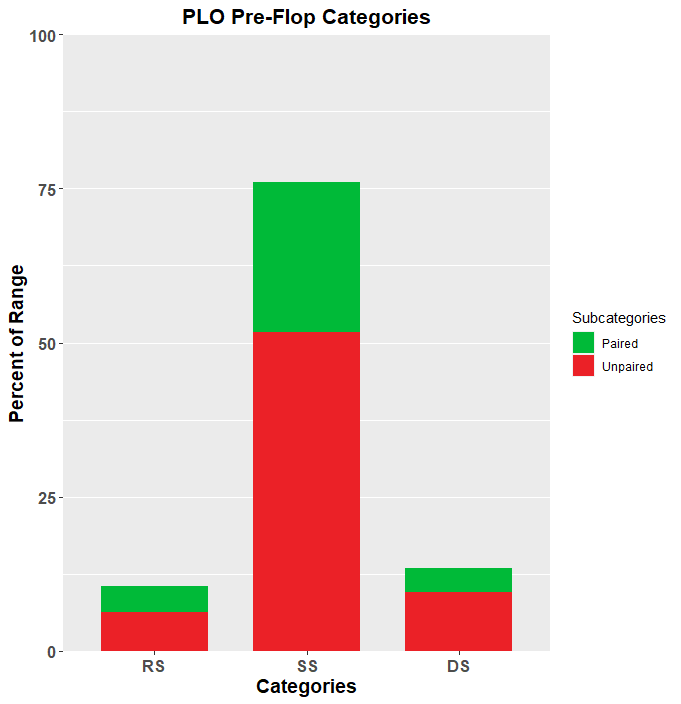
You will first notice how much of an overall percentage suited hands make compared to the rainbow hands. There is also a good amount of paired hands spread across most categories, but single-suited hands have a large concentration.
NHLE Versus PLO
Let’s combine the previous charts in a way that helps highlight the strategic differences between the two games.
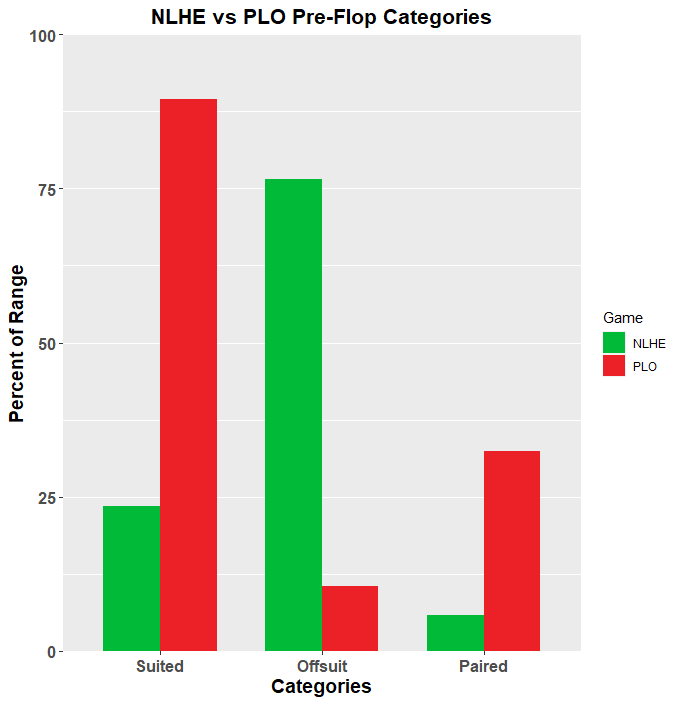
When we compare the two games this way, we can immediately see why strong hands are much more prevalent in PLO. In NLHE, most of your starting hands are offsuit hands. Additionally, pairs do not make up a large portion of your range.
When looking at PLO, you can see that most of your hands are suited. Additionally, pairs now make up a large portion of your starting range. This increase in suited and paired hands means players will show up with sets and flushes significantly more often in PLO than in NLHE.
How We Lose Money in PLO
The implications of what we just covered are significant. You saw that single-suited hands comprise approximately 75% of our starting hands. It might surprise you that you should fold nearly 80% of these from early position and 50% from the button. In practice, the opposite happens.
Many players play a lot of single-suited and paired hands that they should be folding, and their VPIP (Voluntarily Put Money in Pot) frequency quickly increases into dangerous territory. This is one of the biggest pre-flop mistakes players make in PLO that costs them money. In addition to the issue of playing too many hands, players often find themselves being “coolered” by set over set or flush over flush.
In actuality, many of these situations are not coolers. The fact that sets and flushes are so much more prevalent means the relative strength of lower sets and flushes decreases compared to NLHE. Studied players make a lot of money off players who pay them off with weaker sets and flushes too often.
The next time you look down at a starting hand, put it into perspective with the pre-flop categories. Ask yourself what kinds of strong hands you would be making and consider the relative strength of that “strong hand.” What hands you should be playing is beyond the scope of this post; however, being aware of major differences in the makeup of pre-flop categories in PLO will help you begin to understand the shifts required in your PLO strategy.
If you enjoy discussing and studying PLO, join our PLO Study Group on Discord and grow alongside many other dedicated players working to improve their game. Also, make sure to follow me on Twitter and Facebook to stay updated on content.



